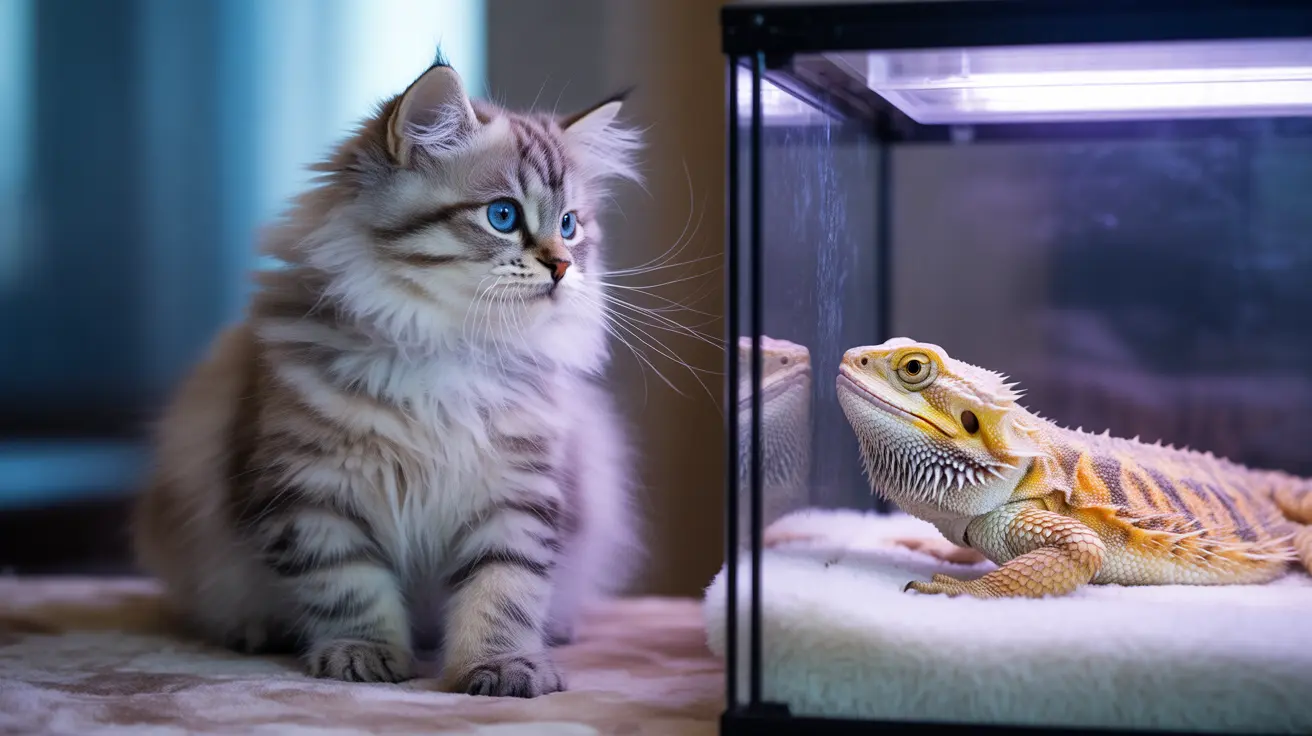Understanding Natural Instincts and Behaviors
Cats are natural predators with strong hunting instincts, particularly towards smaller animals like reptiles. Even well-fed domestic cats maintain these instinctive behaviors, which can pose risks to bearded dragons.
Bearded dragons, being solitary reptiles, don't seek social interactions with other species. They can become stressed by the presence of potential predators, leading to health and behavioral issues.
Potential Risks and Concerns
Physical Safety
Even gentle cats can accidentally harm bearded dragons through normal play behaviors. Their claws and teeth can cause serious injuries to a dragon's delicate skin and bones. Additionally, cats carry bacteria in their saliva that can be deadly to reptiles if transmitted through scratches or bites.
Stress Factors
The mere presence of a cat can trigger stress responses in bearded dragons, including:
- Darkening of skin color
- Puffing out their beard
- Decreased appetite
- Hiding behavior
- Reduced activity levels
Creating a Safe Environment
Secure Housing
A proper setup is crucial for keeping your bearded dragon safe:
- Use a sturdy, lockable enclosure
- Position the tank where cats cannot access it
- Ensure all screen tops are secure and cat-proof
- Create visual barriers if needed to reduce stress
Supervised Interactions
If you choose to allow any interaction between your pets:
- Never leave them unsupervised
- Keep sessions brief and controlled
- Watch for signs of stress in either animal
- Be prepared to separate them immediately if needed
Best Practices for Cohabitation
Following these guidelines can help ensure successful coexistence:
- Introduce pets gradually and from a safe distance
- Maintain separate spaces for each animal
- Provide enrichment activities for both pets independently
- Consider your cat's personality and energy level
- Monitor both animals for signs of stress or illness
Frequently Asked Questions
Can cats and bearded dragons safely live together in the same household?
Yes, cats and bearded dragons can live in the same home when proper precautions are taken. However, they should never be allowed to interact freely, and the bearded dragon must have a secure, cat-proof enclosure.
How can I introduce my cat to a bearded dragon without causing stress or injury?
Start with visual introductions through the dragon's enclosure glass. Keep the cat at a safe distance and reward calm behavior. Never force interactions, and always supervise any closer encounters.
What are the risks of leaving cats and bearded dragons unsupervised during interactions?
Unsupervised interactions can lead to serious injury or death of the bearded dragon, stress-related health issues, and potential harm to both animals. Never leave them alone together.
How do I create a bearded dragon enclosure that protects it from my curious cat?
Use a sturdy tank with a secure, heavy-duty screen top. Place the enclosure in a stable location where cats can't knock it over, and consider using deterrents to keep cats away from the tank area.
What signs indicate that my bearded dragon is stressed by my cat's presence?
Watch for darkening skin color, beard puffing, hiding behavior, reduced appetite, and unusual lethargy. These are all indicators that your bearded dragon is experiencing stress.
Conclusion
While cats and bearded dragons can share a household, successful coexistence requires careful management, proper housing, and constant vigilance. Focus on creating separate, safe spaces for each pet rather than forcing interactions. With proper precautions and understanding of both species' needs, you can maintain a peaceful multi-pet household.






